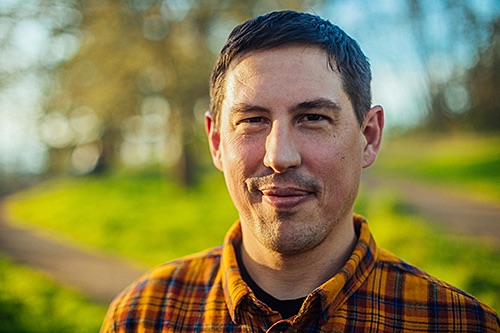We came upon the family at one of the switchbacks. This was on the trail down to Page Springs in the Grand Canyon. The four of them—what appeared to be a mom, dad, and pair of girls—were tucked against a rock wall, catching what little shade there was. The awkward vibe that we’d interrupted a private moment hung in the air. The girls, maybe ages six and ten, were clearly sisters. Same blonde hair, same freckled noses. They sat huddled on a rock, arms around each other. Their eyes were big and watery and looked a little terrified. Tear tracks were scribbled on their dusty cheeks. The youngest one held a beat-up, once-white stuffed animal to her chest. I couldn’t tell if it was a rabbit or a dog with floppy ears.
The parents smiled sheepishly and tried to make more room on the narrow trail. We nodded and said, “Hi,” and kept heading downhill. I was co-teaching a college outdoor skills course for a small liberal arts school in Arizona, and we had a dozen or so in our group. A few of the young women called the girls “so cute.”
We’d been camping at the backcountry site at Horseshoe Mesa, and Page Springs was our closest water supply. It’s already a steep, three-mile hike to get to Horseshoe Mesa, and in its official description of the trail, the National Park Service uses phrases like, “The exposure here impresses some hikers as hazardous,” and, “attention to the problems at hand is essential,” and, “a fall here could have catastrophic consequences.” Though shorter, the trail down to Page Springs is every bit as rocky and steep, maybe even more so. In less than three-quarters of a mile, the trail loses five hundred feet of elevation—which, when you turn around, means gaining five hundred feet of elevation. Not one person in my group, not even the most fit among us, described it as anything less than an ass kicker.
I think it was the stuffed animal that initially haunted me. Something about the forethought to pack it along. Camping in the backcountry required you to leave so many things behind that what you actually brought with you took on a new kind of importance. The stuffed animal looked so ragged I thought there was a good chance it had even once belonged to one of the parents, that it had been their comforter when they were kids.
Maybe it was how both the girls had the same shaggy blonde hair and freckles as my own daughter, who I hadn’t seen in weeks. Or how it was so clear that only a few seconds earlier they’d both been in tears, and how they were now somehow holding it all together for us. Or how the one sister’s arm was wrapped so protectively and unselfconsciously around the other. Whatever it was, while the college kids in my group talked of parties and homework and tattoos they were going to get, while they debated movies and politics and strains of weed, I couldn’t get the image of those girls and that stuffed animal out of my head as I hiked.
My wife and daughter were back home in Oregon. I’d spent the three years since earning my MFA working as a landscaper, and I was so hungry for some teaching experience I moved to Arizona just to adjunct for one semester. While I’d first been excited by the opportunity, once I started driving south, I was hit by such a flood of loneliness and fear that when I pulled over at the California border to call my wife, I started sobbing before she could even finish saying, “Hello.”
Patiently, she waited for me to calm down and tell her what was wrong. “I’m just so scared that something is going to happen, and I’ll never see you guys again,” I finally managed.
“That’s not going to happen,” she said. She even promised.
“I know,” I said, sniffling. It was silly. I’d cried, and now I felt calmer. I’d had my meltdown, and now I could go on. “I know,” I said again, even though you never really do. You can never really know if an accident will happen or not.
“Putting Her on the River” continues in part two on Wednesday.

